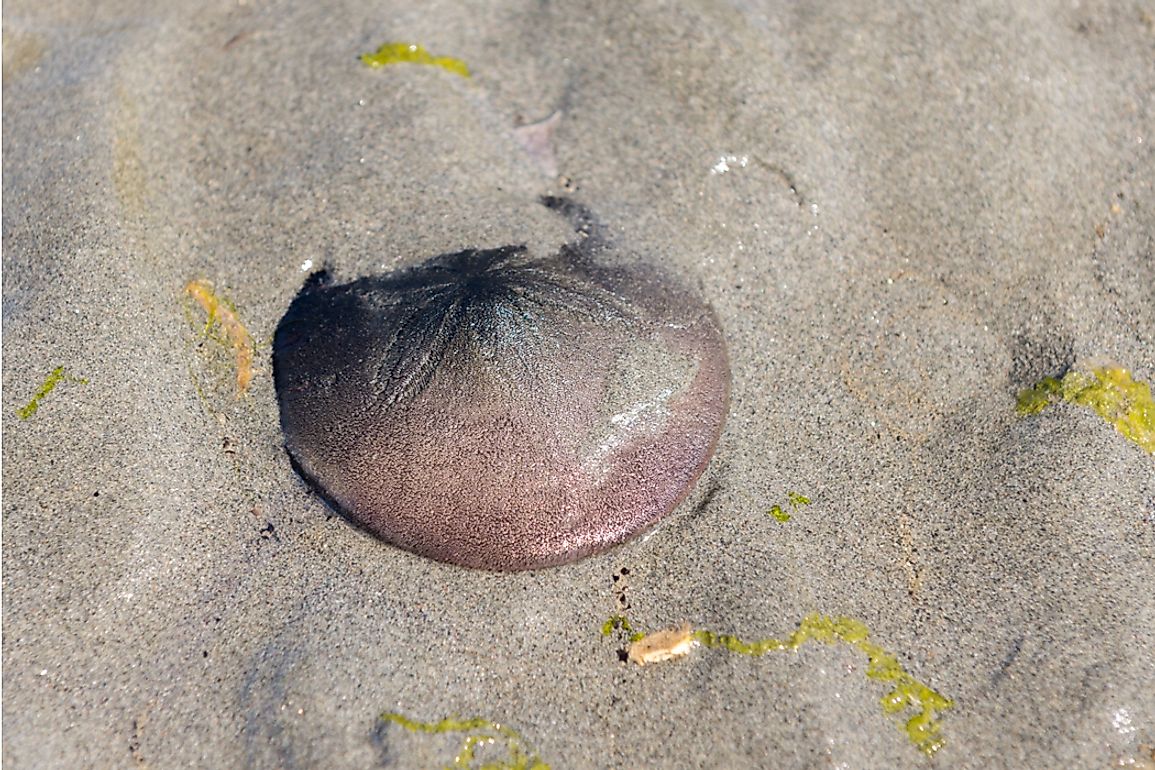Sand Dollar Facts: Animals of the Oceans

Sand dollars are marine creatures that are invertebrates and belong to the order Clypeasteroida. The creatures have a firm skeleton called a test. Sand dollars are close relatives to other marine creatures such as the starfish, sea urchins, and sea cucumbers. More specifically, sand dollars are members of the group known as echinoderms.
Physical Characteristics
Physically, their bodies show radial symmetry with a petal-like arrangement made up of five sets of pores. The pores are in the endoskeleton and help in gas exchange via the podia located in those perforations as well as movement. At the centre of the petal-shaped body is the mouth of the sand dollar while the anus is at the back of the creature. When alive, sand dollars are purple, not white. White is a color their shells assume after death.
Diet
The entire shell of the sand dollar is covered by tiny spines that can move. These spines allow the sand dollar to move, burrow, and eat. Their diet includes algae, tiny copepods, and larvae. Their spines working tandem with the cilia on them move food to the mouth located at the centre. The channels that move food to the mouth are padded by podia. Spines and pincers are used to capture planktons. The mouth has five parts that look like teeth that are used to chew and grind captured food before swallowing. Digestion can take up to two days.
Habitat and Range
Sand dollars are typically found in tropical regions. Sand dollar habitats are usually close to the beach with a few living farther away from the beach in waters of up to 30 feet deep. Their spines, among other uses, allow them to move in these shallow waters full of sandy sediments or mud. Sometimes, they are found on top of the shallow waters that they inhabit.
Behavior
Sand dollars prefer to stick together. In fact, as many as 625 sand dollars may inhabit one square yard. One of the reasons that they have been attributed to their togetherness is because of the conducive reproduction environments provided by the shallow regions they like to inhabit. As with the majority of the species found in their group, males and females of sand dollars are usually apart.
As a mean of self-defense, sand dollars use a method called larvae clone. The larvae clone themselves when predators are near. The cloning technique is useful because the larvae reduce in size thus ensuring that they not visible to predators. Another benefit of this mechanism is that it allows the larvae to have a greater chance of survival and maturity. While mature, few predators prey on the sand dollar like some species of the starfish and ocean pouts.
Reproduction
Reproduction is done in shallow waters where it is most conducive. Male and females stay apart. Fertilization is external and occurs after gametes are released into the water. After the larvae form, asexual reproduction in the form of cloning may take place if predators are nearby.











